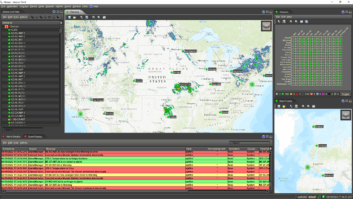
The world record for fastest data transmission over a single optical fiber has been broken, with researchers at Aston University achieving a speed 4.5 million times faster than the average home broadband. The researchers were able to send data at a rate of 301 terabits (Tb) per second by opening up new wavelength bands not yet used in fiber optic systems.
The team, consisting of Professor Wladek Forysiak and Dr. Ian Phillips , in collaboration with National Institute of Information and Communications Technology (NICT) in Japan and Nokia Bell Labs in the USA, developed optical amplifiers and optical gain equalizers to access new wavelength bands within the optical fiber.

“Broadly speaking, data was sent via an optical fiber like a home or office internet connection,” remarked Dr. Phillips. “However, alongside the commercially available C and L-bands, we used two additional spectral bands called E-band and S-band. Such bands traditionally haven’t been required because the C- and L-bands could deliver the required capacity to meet consumer needs. Over the last few years Aston University has been developing optical amplifiers that operate in the E-band, which sits adjacent to the C-band in the electromagnetic spectrum but is about three times wider. Before the development of our device, no one had been able to properly emulate the E-band channels in a controlled way.”
“By increasing transmission capacity in the backbone network, our experiment could lead to vastly improved connections for end users,” expanded Forysiak. “Growing system capacity by using more of the available spectrum – not just the conventional C-band but also other bands such as the L, S and now E-bands can help to keep the cost of providing this bandwidth down.”
The team’s work has been published in Optics Letters, and presented at the European Conference on Optical Communication (ECOC).










